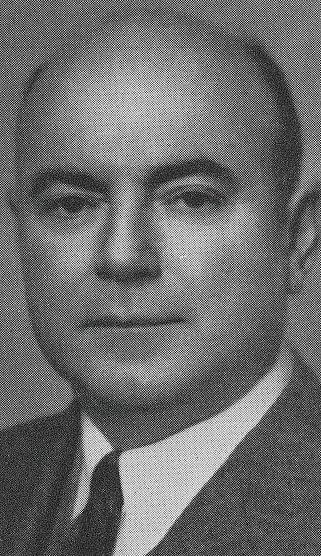Name Bernard Kearney | ||
 | ||
Education Albany Law School, Union College | ||
Bernard William "Pat" Kearney (May 23, 1889 – June 3, 1976) was a Republican member of the United States House of Representatives from New York. Kearney served on the U.S. House of Representative's Un-American Activities Committee (HUAC) during the Cold War.
Contents
- Early life
- Legal career
- World War I
- Post World War I
- World War II
- Post World War II
- Congressional career
- Retirement and death
- References
Early life
"Pat" Kearney was born in Ithaca, New York on May 23, 1889, the son of Patrick B. Kearney, a clothier, and Josephine M. (Oster) Kearney. He graduated from Albany Law School in 1914, where he was a member of the Delta Chi Fraternity, and became an attorney in Gloversville.
He served in the New York National Guard from 1909 until 1917, first as a member of Company G, 2nd New York Infantry, and then with Troop B, 1st New York Cavalry. He served on the border with Mexico during the Pancho Villa Expedition, attended Officer Training School at Fort Niagara and received his commission in 1917.
Legal career
Kearney practiced law in Hamilton and Fulton Counties. He was the City Judge of Gloversville from 1920 to 1924. He served as Assistant District Attorney of Hamilton County from 1924 to 1929, and Fulton County from 1929 to 1931. He was Fulton County District Attorney from 1931 to 1942.
World War I
Kearney served in France as a member of units in the 27th Division during World War I, and saw combat at St. Mihiel and Meuse-Argonne. He received the French Legion of Honor (Officer) and Croix de Guerre.
Post World War I
He continued his National Guard service after the war, commanding the 105th Infantry Regiment as a Colonel, and the 53rd Brigade as a Brigadier General. He retired from the National Guard in 1940.
Active in veterans organizations, Kearney served as National Commander of the Veterans of Foreign Wars from 1936 to 1937.
World War II
During World War II Kearney commanded a brigade in the New York Guard, the volunteer organization that performed the New York National Guard's stateside functions while National Guard soldiers were serving overseas.
Post World War II
When the 27th and 42nd Infantry Divisions were fielded in New York as part of the National Guard's post-war reorganization, Kearney was recalled from retirement, promoted to Major General, and assigned as commander of the 27th Division. He retired again in 1948.
Congressional career
Kearney was elected to the United States House of Representatives in 1942, and served eight terms, January 3, 1943 to January 3, 1959. He rose to become the ranking Republican member of the House Un-American Activities Committee, and developed a reputation as a staunch anti-communist. His major legislative accomplishment was co-authorship and passage of the GI Bill to benefit veterans returning from World War II. Kearney was also given credit for having suggested the law's title.
Retirement and death
Kearney did not run for reelection in 1958. In retirement he resided in Canandaigua, New York and Venice, Florida.
In 1959 Congress passed special legislation authorizing Kearney to accept and wear the Philippine Legion of Honor (Commander). He received this award in 1953 to acknowledge his support and efforts to boost the morale of the Philippine resistance during the Japanese occupation in World War II.
He died in Venice on June 3, 1976. He is buried in Arlington National Cemetery, Section 30, Grave 352.
